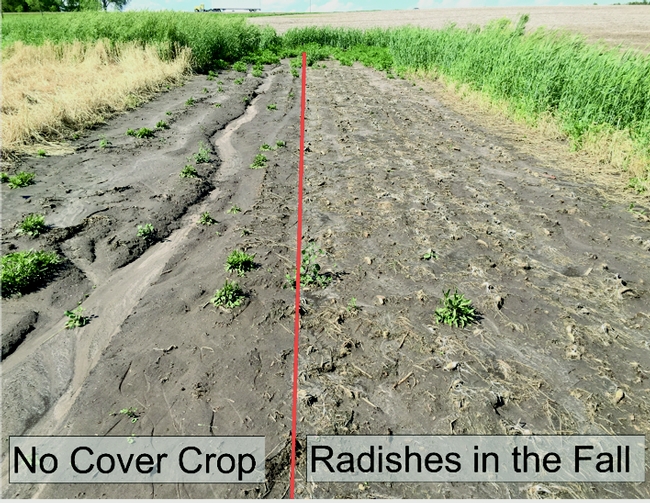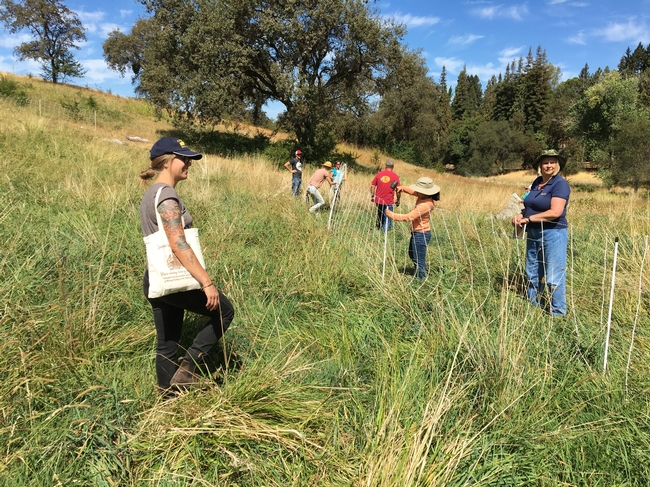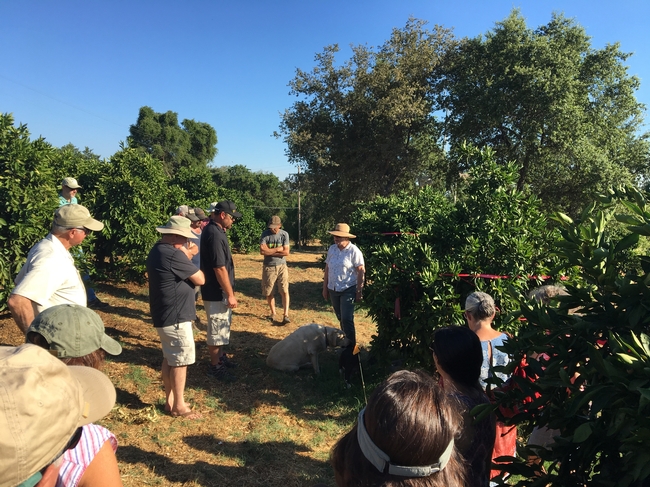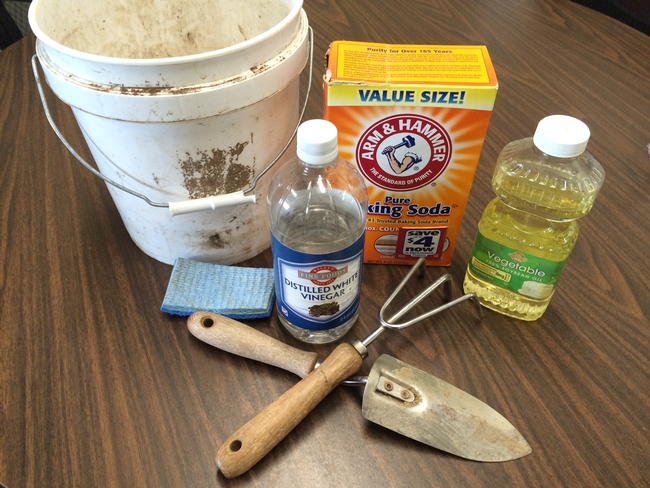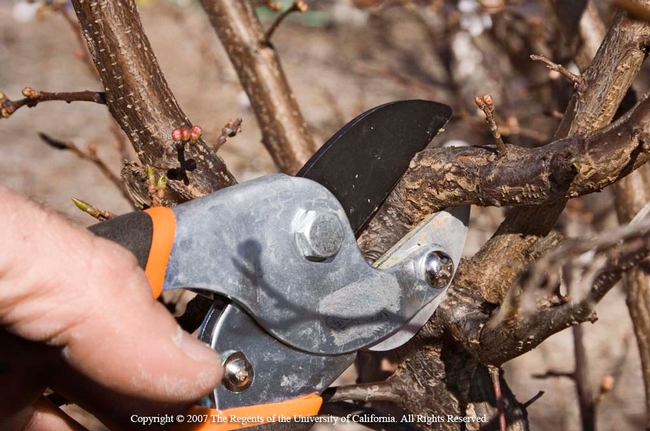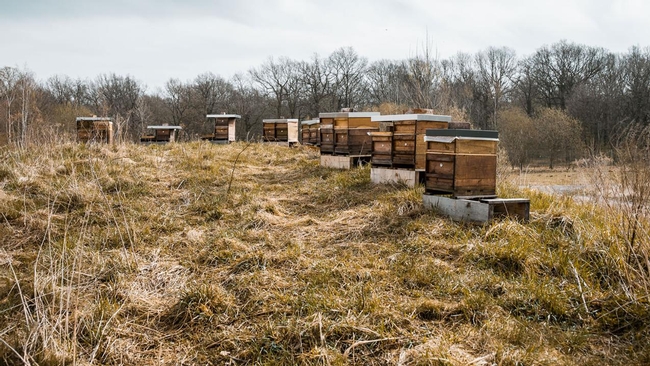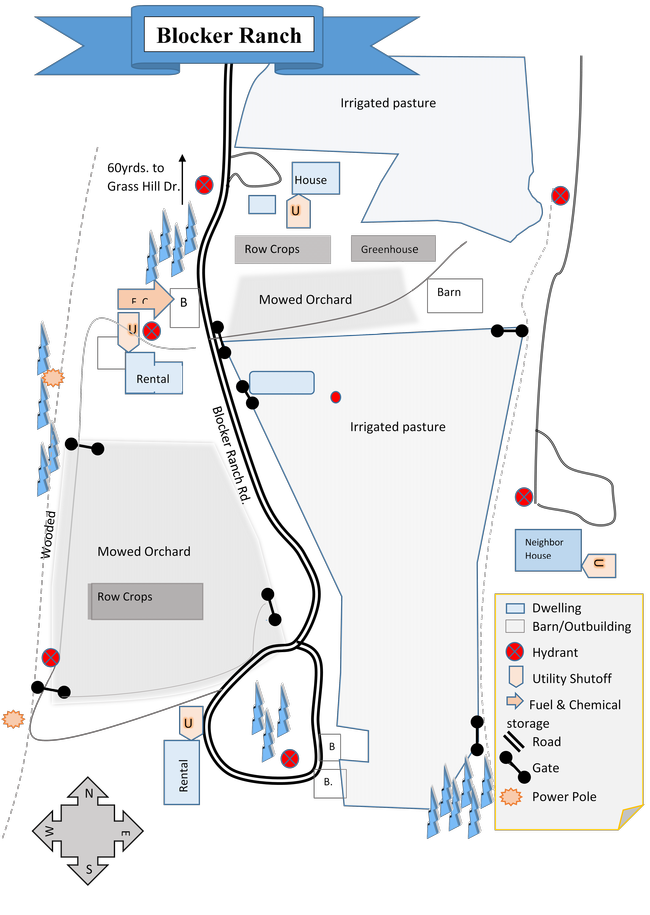Posts Tagged: resources
Risk - What are You Waiting For?
Risk – What are you waiting for?
As the old saying goes, when it rains it pours. Nobody knows that better than we do right now, literally. For most farmers, rain is a good thing. However, for mandarin growers the amounts of rain and lengthy periods of high humidity are not good for mandarins in the middle of the season. This brings up the issue of risk on the farm. Drought, wildfire, food safety issues, crop loss, rain or frost damage are just a few of those risks.
Despite the periodic heavy rains, Placer and Nevada Counties are considered “abnormally dry” for this time of year according to the national drought monitor. After moderate and severe drought, this may seem like a fairly normal year. With shifting climates the “abnormal” could become normal over time. As we saw this fall, wildfire tore through thousands of homes and hundreds of thousands of acres. It seems the “most devastating wildfire in history” is becoming a headline each year.
While the risk of catastrophic wildfire seems to be increasing each year, rain and frost damage have historically plagued foothill farms. With travel throughout the world as easy as an overnight plane ride, international agriculture pests and diseases are also a real possibility here. I am not trying to scare you - I just want to highlight the need for farmers and ranchers to be aware of and plan for risks, and have the necessary resources to get through it.
Mother Nature is not the only risk; consider the romaine lettuce farmers on the Central Coast who had no market this fall when E. coli was found in that product. Even if one farmer did everything possible to maintain food safety, their crop may have been a total loss. Wouldn't you be glad to have crop insurance or revenue protection in place if you were in their shoes?
You will have the opportunity to hear from a fellow farmer and insurance agent, Domenic Fino of Golden Pacific Crop Insurance at the Farmer-to-Farmer Breakfast on January 9th at the Auburn UC Cooperative Extension office, from 8 to 11 AM. Sign-up today at http://ucanr.edu/survey/survey.cfm?surveynumber=26336 It's time to be informed and prepared to protect your farm.
Resources available on our website:
Risk Management https://ucanr.edu/sites/placernevadasmallfarms/Farm_Business_Planning/FBP_Risk_Management/
Drought Planning - https://ucanr.edu/sites/placernevadasmallfarms/Drought/Drought_Planning/
Financial Resources and Insurance programs https://ucanr.edu/sites/placernevadasmallfarms/Resources/Financial-Resources/
Open House - Do you know what University of California Cooperative Extension Placer & Nevada Counties Agriculture Programs do?
That is a long name for a little job right? Nope! The UCCE Placer & Nevada Counties serves a growing number of small farmers and ranchers in these two counties. Over 75% of commercial farms and ranches are small scale(less than 50 acres). While the acreage of land in farms may be declining, the number of small farms is increasing. Over 500 local small-scale farmers and ranchers participate in our workshops and field meetings each year!
Why is UCCE Placer & Nevada Counties' work so important?
Increasing land values and development pressures make it difficult to start or expand a farm. The average age of our producers is over 50 years old. That means we need to train and mentor new farmers. It costs small farms and ranches more to produce a product than large-scale operations, so quality and marketing are critical. UCCE partners with farmers and ranchers for education and community-building activities. Training and mentorship in production, marketing, risk management, and business management are particularly important.
Where can I find out more about the agricultural programs available to me?
You are invited to an Open House for farmers and ranchers at the Auburn UC Cooperative Extension (UCCE)/Farm Advisor Office on December 13 from 4 to 7 PM. You can also find out more by visiting our Foothill Farming website and liking our Facebook page.
Resources:
Open House information – https://ucanr.edu/sites/placernevadasmallfarms/?calitem=433612&g=22527
Foothill Farming website – https://ucanr.edu/sites/placernevadasmallfarms/
Facebook page – http://www.facebook.com/FoothillFarming
“There’s no point in having a dull knife (pun intended)”
Sadly, there are a lot of dull, rusted tools out there, even on productive farms. If you watch the videos at the end of this post, you will hear “Rust is always a sign of neglect” so let this be the end of neglect. Put your tools “to bed for the winter,” or prepare them for pruning season, right around the corner.
There are three main parts of tool maintenance: clean, sharpen, and lubricate. These three steps should simply be done, in that order, every single time a tool is put back in the shed. The more often you do it, the easier and more effective it is at improving the lifespan of your tools.
Clean: There are three steps - cleaning off debris, removing rust, and sanitizing to prevent the transfer of disease. Proper cleaning may require removing screws and partially dismantling the tool.
Clean – Pressurized water, or a wire brush and a little soapy water are effective when used to scrub off all dirt and debris from your tool.
Rust? – Sometimes, especially if your tools have not been constantly maintained properly, you may see a rusted tool that just isn't what it used to be. Don't worry, if you have this problem, there are some easy tips that can help take that rust off. Spray the tool with vinegar, wrap in a paper towel and cover in plastic for about three hours, up to 24 hours. Remove the paper towel and plastic. Use a brush, an old toothbrush works just fine on small projects, put some baking soda in water and use the brush to scrub off the rust. Turpentine and steel wool also work well. After you scrub the tool to remove the rust, rinse thoroughly with water.
Sanitize – To ensure your tools are not going to spread disease around your farm, sanitation is important. Wipe down the tool surface with a 10% bleach solution (10 parts water to 1 part bleach), leave it for 30 seconds and then rinse thoroughly with water. Be sure to dry and oil your tool after sanitizing to be sure it does not rust from the bleach! Learn how below.
Sharpen: Many tools, even though you may not think of them as having a blade, actually require frequent sharpening to ensure their consistent function. A shovel, for instance, needs sharpening on the edge, which helps cut through roots, make clean holes, among other things. The basic method of sharpening is pretty simple. Use caution when sharpening and be sure to wear the proper protective equipment, such as gloves and eye protection.
Stabilize – Small tools, such as hand pruning shears, may easily be held firmly with the non-dominant hand. Larger tools, such as mower blades, or loppers, may need to be held in a vise.
Sharpen - Locate the proper edges to sharpen. Remember that there is a cutting blade and a bypass edge on some tools like pruning shears. You only need to sharpen the blade. A file can be used and should only be pushed in one direction. Hold the file at an angle, usually 45 degrees to the blade. Be sure to lubricate the blade and properly tighten screws after sharpening.
If you would like to pay a professional to sharpen your tools, at our January 9th Farmer-to-Farmer Breakfast, Ruben with Sharpening Tech will available to sharpen tools. Watch for an announcement on the Foothill Farming Calendar.
Lubricate: It is very important to oil your tools, even if they do not need to be sharpened. Oil helps keep the rust at bay. If your tool comes in contact with food crops or soil, we recommend a plant-based oil, like linseed oil for wood handles, and vegetable oil for pruners and shovels. This should happen each time your tools are put away. A barrel or bucket with sand and a small amount of oil left near your tool shed will work. Simply stabbing the tool in and out of the sand mixture can remove debris and oil the tool at the same time.
Store your tools standing upright or hanging, this also helps prevent rust. Develop a system to maintain your tools and always have them in their correct place so that anyone working in your operation can find the right tool anytime. Livestock Advisor Dan Macon has developed a system of sharpening his tools and oiling all the handles on New Year's Eve each year. He also prepared a lambing box, and outfits it with sufficient supplies and freshly sharpened tools each year before lambing season. What systems do you use, or need to use, to be prepared in your operation?
Video Resources:
How to Easily Clean Rusted Gardening Tools – Organically! – Learn to use vinegar and baking soda to remove old rust from your hand tools. https://www.youtube.com/watch?v=jtdDotcHnl4
Sharpening Tools – Pruners, Loppers, Shovels and More! – GrowOrganic.com – Tips to properly clean, sharpen, and store your hand tools to improve their life and performance. https://www.youtube.com/watch?v=yn8npWqkCa8
How to Replace a Shovel Handle - Wranglerstar.com – A detailed, step by step demonstration on how to properly replace a broken shovel handle with a new one. https://www.youtube.com/watch?v=j5UH0Y4KurY
Support Your Local Bee Keepers: how you can do your part
The humming sound of busy honeybees filled the fall air, darting back and forth as I followed long-time beekeeper Randy Oliver around his bee yard. I was there to learn about a new issue for local beekeepers. Oliver explained that local honeybee colonies have been robbed of their honey in places they have been kept year-after-year for several decades. Robbed?? Yes, by other honeybees, from hives from other parts of California. In the last couple years, numerous out-of-area hives have been placed in close proximity to local hives. Oliver, along with local beekeepers, presented a draft proposal to the Nevada County Ag Advisory Commission, which recommended an emergency beekeeping ordinance to county supervisors.
Oliver explained that the proposal calls for a minimum of a 2-mile radius around each existing apiary location and a 45-hive maximum in each location. All bee hives in Nevada County must be registered by the Ag Commissioner in January each year. This ordinance is designed to provide the resources and “teeth” to protect local bees and their food sources. Put in rancher terms, imagine that you had your cattle on pasture, someone saw your cattle grazing and decided to dump off 100 cows in the same pasture because it looked like a good food source. “This is beekeepers regulating themselves” said Oliver. The ordinance would not cost taxpayers and is funded by beekeepers themselves. Hobby beekeepers would be exempt from the registration fees and existing hives would be grandfathered in. Another issue with having bee colonies in close proximity is the potential for infection and mite drift into hives. Oliver explained the dangers of reintroducing a bacterial disease called American foulbrood that is nearly eradicated in Nevada County. This issue may also be of concern in Placer County.
So what does this have to do with local farmers and ranchers? If someone asks permission to put honeybee hives on your land, or leaves a note on your gate, contact your Nevada County Beekeepers Association or search “Honey” on the Placer Grown website to find local beekeepers.
A report released in March by the National Agricultural Statistics Service (NASS) stated that California produced 13,735,000 pounds of honey in 2017, worth more than $28.5 million dollars. Beekeeping is an important agricultural activity in this area. Hive rentals to almond growers rather than honey provide the major income for beekeepers, but honey is an important product in the foothills.
Learn more:
Why are honey bees important to crops and farmers? – Bees Matter
https://www.beesmatter.ca/why-are-honey-bees-important-to-crops-and-farmers/
Learn How to be a Bee-Friendly Farm - http://pollinator.org/bff
Cattle, Honey Bees Graze in Harmony on Wisconsin Farm - Find out how NRCS can help you increase pollinators on your farm or ranch. https://www.nrcs.usda.gov/wps/portal/nrcs/detail/national/home/?cid=NRCSEPRD405218
Nevada County Bee Keepers Association – http://nevadacountybeekeepers.org/
Placer Grown - http://www.placergrown.org/
Randy Oliver - http://scientificbeekeeping.com/
Farm Preparation for Wildfire and Other Emergencies
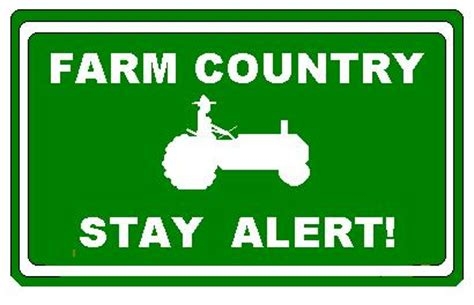
According to many state fire officials, we no longer have simply a ‘Fire Season' but a ‘Fire Year'. In winter drought conditions, some parts of our region do not receive enough rain to mitigate fire danger. It is more important than ever to constantly assess your farm for fire safety and be prepared for any emergency.
The following information will assist you in thinking through four important areas of disaster preparedness for your farm: Paperwork & Plans, Farm Map & Layout, Tools & Machinery, and Operations & Training.
Paperwork & Plans:
- Conduct a fire risk assessment and record your findings. Assess brush clearance, road access, evacuation routes, defensible space, topography (fire climbs hills quickly), and water sources. If needed, make a plan to address any critical issues.
- Evaluate current insurance coverage to ensure adequate coverage for farm assets. Consider livestock, crops, buildings, and equipment.
- Keep up-to-date production, marketing, and financial records. Check the Foothill Farming website resources on risk management and business planning tools for templates. Scan or store them on a USB flash drive or external hard drive.
- Make a farm communication plan. What happens if you are not home during a disaster situation? Do you have phone numbers and good relationships with neighbors? Are the phone numbers written down for your family members and employees as well?
- Create a farm emergency plan, use the following free online templates or use them as a guide to create one more suitable for your own farm.
- http://ucanr.edu/sites/placernevadasmallfarms/files/289237.pdf
- https://www.formsbank.com/template/325465/emergency-plan-for-farm-template.html?page=5
- http://www.maeap.org/uploads/files/EMERGENCY_PLANNING_fillable_Form_E2575-ET_AA.pdf
- http://www.ncagr.gov/disaster/Farm-Emergency-Plan-Template.pdf
Developing a farm emergency plan before a disaster can help you respond more rapidly and objectively.
Farm Map & Layout:
- A farm map should be part of your emergency plan. Create a map including symbols and a key for the following:
- Homes, barns, and outbuildings.
- Utility shutoffs.
- Power and utility lines.
- Fuel and chemical storage.
- Roads and bridges (including weight limitations).
- Water sources and delivery systems.
- Gates (including combinations).
- Fuel breaks.
- Any other possible farm hazards.
You may include brief general guidance for emergency responders on the map as well.
- A well-maintained and accessible water source is critical. If possible, consider a water source for fire trucks. An accessible source includes:
- Defensible space.
- Gravel road access within 12 feet of water source.
- Minimum 45-foot radius turnaround close by.
- Post permanent signs indicating water source location.
- For more detailed information about what is needed at a water source, check out this information from Oregon State Extension https://catalog.extension.oregonstate.edu/sites/catalog/files/project/supplemental/pnw618/pnw618-chapter6.pdf
- Farm design should incorporate these principles, especially around structures. Create at least 100 feet of defensible space by:
- Removing flammable objects from around barns or dwellings (e.g. flammable vegetation, feed bags, cardboard boxes, plant debris, fuel, etc.).
- Breaking up fuel continuity by separating plants from each other in gardens and landscape design.
- Taking care in selecting, locating, and maintaining trees.
- Post a clearly visible sign with property name and number at the entrance.
Tools & Machinery:
- Carry fire extinguishers and fire tools, especially in off-road vehicles. (e.g. trucks and tractors), CalFire requires a 5-gallon water supply and a fire tool be carried in wildland settings – consider adding this equipment to your tool box!
- Conduct frequent inspections of farm machinery for debris removal. Pay attention to hazards associated with exhaust systems and catalytic converters.
- All farms should have proper personal firefighting equipment such as shovels, hoes, and fire extinguishers that all farm employees can carry.
- Use rodent deterrents as they can chew through electrical insulation.
- Limit or postpone machinery use on high fire danger days. If use is unavoidable, plan for competing tasks before 10:00 AM.
- Stay 30 minutes after machinery use is shut off to monitor fire risk.
- More tips on preventing farm equipment fires, http://www.redrivermutual.com/wp/wp-content/uploads/Preventing-Farm-Equipment-Fires4.pdf
Operations & Training:
- Conduct an annual fire plan and equipment “refresher” for all farm personnel. Consider labeling safety equipment and fire tools on your map, with signs for your employees and family. Train folks on how to use this equipment.
- Have a routine for “red flag days” such as delaying mowing or machinery use.
- Although California law requires all electric fences to have low-impedance chargers, check frequently to ensure wires are free of materials that may cause the fence to arc. Always operate according to manufacturer directions.
- Restrict or clearly designate smoking areas.
- Include fire danger mitigation and forest management in annual planning.
Fire prevention should be a year-round activity in our fire-prone region. Be sure to consider the needs of both family and farm personnel in any emergency situation. Proper planning now will help mitigate the inevitable stress involved in farm emergencies. We would love to hear your thoughts, plans, and ideas related to disaster preparedness. Please feel free to comment below.


